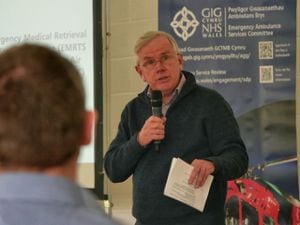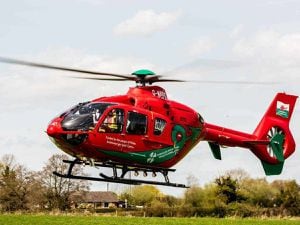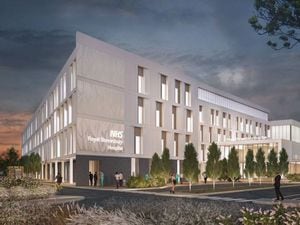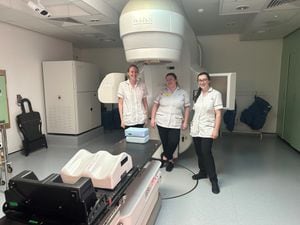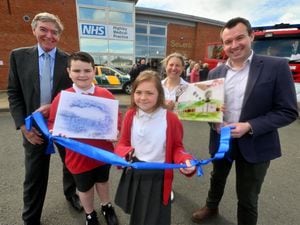Shropshire A&E targets are ‘nowhere near’ as it is revealed waiting times are second worst in country
The trust in charge of the county’s major hospitals has admitted its A&E performance “is nowhere near where we want it” after figures revealed waiting times were the second worst in the country for October.
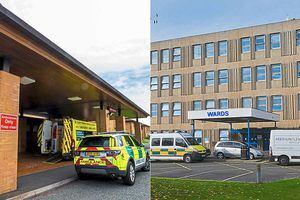
Newly released figures showed that only 73.3 per cent of patients at Shrewsbury & Telford Hospital NHS Trust’s A&E departments had been seen within four hours – below the national target of 95 per cent and national average of 90 per cent. In light of the figures bosses at trust, which manages Royal Shrewsbury Hospital and Princess Royal Hospital Telford, have said that their top priority was to ensure patients were treated “safely and appropriately”.
Sara Biffen, interim chief operating officer for the trust, said A&E departments at both the Royal Shrewsbury Hospital and at Telford’s Princess Royal Hospital were “under a great deal of pressure”.
The figures come against the background of the trust’s management arguing that proceeding with the Future Fit reorganisation of the hospitals is the best way to tackle the challenges faced by the organisation.
Ms Biffen advised those with minor illness or injuries to consider whether they really need to visit hospital.
“We know that our performance against the A&E target is nowhere near where we want it to be, but our first priority is to ensure our patients are treated safely and appropriately,” she said.
“As we have said on many occasions, our A&E departments are under a great deal of pressure, dealing with increasing attendances and more and more complex conditions, such as respiratory problems, which mean more people are being admitted into our hospitals.
“We continue to work with our partners both in the NHS and in social care so that those patients who no longer need the specialist care we provide can leave our hospitals in a safe and timely manner.”
Ms Biffen said there were more appropriate health services for those not suffering with conditions appropriate for A&E.
“We would ask people to think carefully before coming to A&Eand facing what could be a long and unnecessary wait,” she said.
“People suffering from minor illness or injuries can access more appropriate health services, allowing us to focus on those people with serious conditions, who need to be seen urgently.”
Last month Shropshire’s ambulance crews, paramedics and emergency staff experienced the second busiest day of the year.
Ms Biffen suggested that only those who are “seriously unwell or critically injured” attend the A&E.
On November 20, 426 patients attended the trust’s emergency departments in Shrewsbury and Telford – the equivalent of 18 people an hour, every hour.
November 21 continued to be busy, with about 45 ambulances arriving at the A&Es by midday.
Ms Biffen said that Pharmacists are able to give advice on medicine and can use their clinical expertise, together with their practical knowledge to offer advice on common problems such as coughs, colds, aches and pains.
NHS 111 is also available to provide medical help fast when it’s not a 999 emergency.
Times target missed by 20 per cent
Figures have revealed that 73.3 per cent of patients were treated or admitted within four hours at Princess Royal Hospital and Royal Shrewsbury Hospital for that month.
That is more than 20 per cent lower than the target of 95 per cent, and nearly 17 per cent lower than the national average of 90.1 per cent.
Only one other trust was worse that Shropshire, The Princess Alexandra Hospital NHS Trust in Harlow, where 68.3 per cent of A&E patients were seen within four hours.
Bosses at SATH have said their top priority is to ensure patients are treated “safely and appropriately”.
And while the figures for A&E times are well below the national average, the newly released data showed that the trust was meeting its targets for cancer care and planned operations.
More than 87 per cent of patients were given cancer treatment within 62 days of urgent GP referral for September, it was revealed.
That is nearly three per cent above the national target, and more than five per cent above the English average of 82 per cent. For planned operations in September, 93.3 per cent of patients were waiting less than 18 weeks.
The national target was for 92 per cent. The English average was 89.1 per cent.
Chris Hopson, chief executive of NHS Providers, said trusts were not where they need to be as they headed into winter.
“The NHS is already under severe pressure, and while the additional funding in the recent budget is welcome, it has come very late to be used to maximum effect,” he said.
“We cannot say with certainty how tough this winter will be, but the likelihood is that services will be sorely tested.
“We must hope the considerable efforts to curb the impact of flu are successful.”
Nationally more than three million patients who visited UK A&Es waited more than four hours in the past 12 months – up 120 per cent since 2012-13.
By comparison the number of visits has only risen by just over seven per cent to 26.9m.
In England an extra £1bn is being invested in social care this year, while £435m has been freed up to help with winter planning, including putting GPs in A&Es to deal with the more minor cases.
Niall Dickson, chief executive of the NHS Confederation, which represents organisations across the healthcare system, warned that hospitals were already nearly full and with a cold weather warning issued for this weekend the situation was likely to get worse.
“These figures tell a very alarming story at this stage in winter. Hospitals are nearly full, across England they are experiencing nearly 95 per cent bed occupancy,” Mr Dickson said.
“This level of system pressure is quite simply unsafe and is putting patients at risk.
“There is a real human cost here.”

